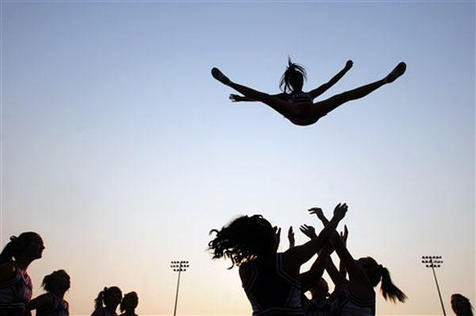CHEER |
Safety First! is the latest of a number of safety initiatives that Cheerleading's governing bodies have implemented in past years.
The results show, among other things, that cheer's total catastrophic injuries were cut in half from 2005 to 2006*, and that cheerleading's injuries per 100,000 participants is only 2.0, significantly less than the figures for popular women's sports such as gymnastics. Below are some tips compiled by the National Athletic Trainers’ Association that help reduce cheerleader injuries at all levels:
Health care professionals may describe a concussion as a “mild” brain injury because concussions are usually not life-threatening. Even so, their effects can be serious. |

